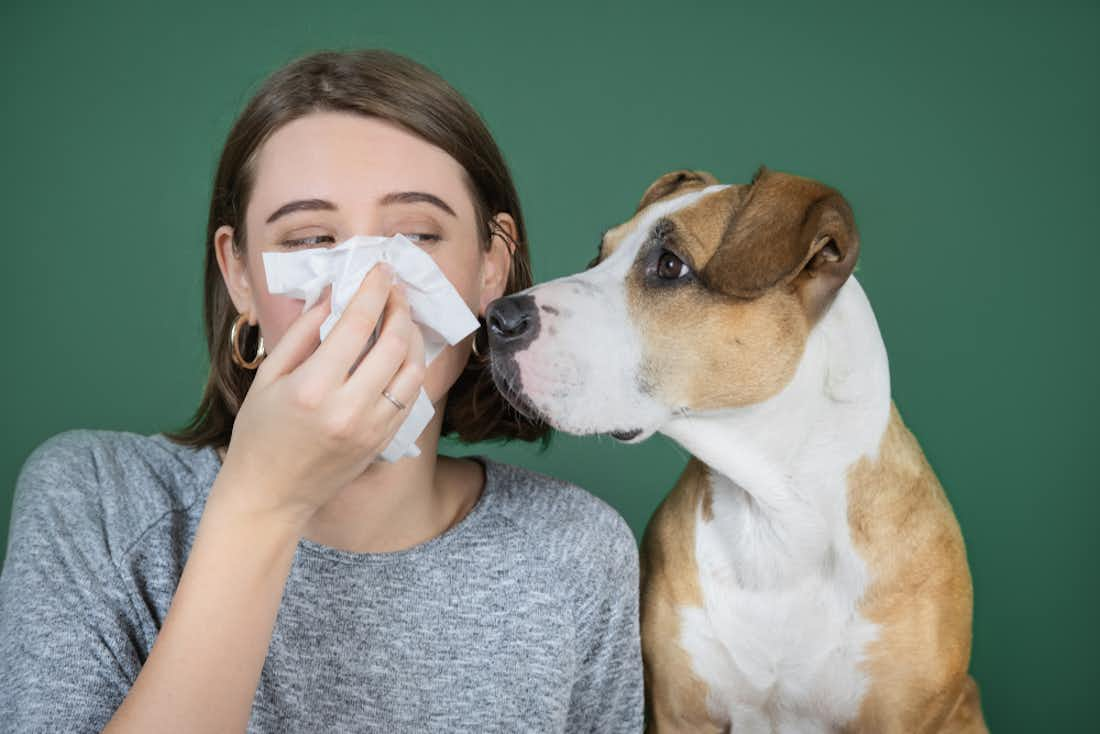May 27, 2022
How Does an Allergy Test Work?
6 minute read
Exam day in high school and college is always one of the most stressful. You need to cram everything the night before, make sure your pencils are nice and sharp, and then hope and pray for that stellar A. All the stress is enough to make you want to cry.
That’s one thing that school tests and allergy tests definitely don’t have in common, and frankly, allergy tests aren’t anything like the pencil and paper worksheets you’d sweat over as a sophomore. But one that allergy tests can do is finally clear the air and make it very apparent what exactly you’re allergic to.
They’re an important tool that allergists use to help bring you relief. But how exactly do they even work? While we won’t quiz you at the end, this information is still important for you to know. So grab a notebook and let’s get started!
What Are Allergy Tests?
There are many types of allergies, and each one comes with their own share of causes. Food allergies are usually easily recognizable because they spark a reaction after ingesting certain substances. Skin allergies are also pretty easy to recognize because they’re caused by contact with an allergen.
However, in cases of environmental allergies specifically, it can be difficult to pinpoint the source. This is because things like pollen, pet dander, mold, dust mites, and ragweed are invisible to the eye, making it hard to distinguish what exactly is making you sneezy and wheezy.
This is where allergy tests can come in handy. They can shed some light on what’s bringing you discomfort while also helping to specifically analyze which allergens you’re most susceptible to.
There are a few different types of allergy tests that work in different ways, but they all rely on the same premise.
Antibodies, Anybody?
When your immune system is confronted with an unknown force, it releases chemicals known to try to flush them out. These chemicals are released in response to antibodies produced by your immune system.
When you have an allergy, the immune system has allergen-specific antibodies known as immunoglobulin E, or IgE for short. When you get an allergy test, it typically is a way to analyze how many allergy-specific IgE antibodies you have in your blood for a given substance.
Small amounts of IgE antibodies are found in the blood normally, but higher amounts are typically present in patients who have allergies.
Testing, Testing
A few different types of allergy tests use the fundamental concepts of analyzing the amount of IgE antibodies in your bloodstream. Here are the most common types of allergy tests, as well as how they work.
Skin Prick Test (Scratch Test)
If you’ve ever had to go to an allergist’s office to get a test done, there’s a good chance it was a skin prick test, also known as a scratch test. This is often considered the standard for allergy testing, mainly because it’s effective and fast.
A scratch test works by poking your skin with a very tiny needle that barely pierces the outer layer. Then, a liquid form of your suspected allergen is applied to the testing area.
After some time, the allergist will see how your skin reacts and whether you have a positive result to any of the allergens. A positive result, meaning that you’re allergic to a substance, is typically indicated by a reddened bump called a “wheal.”
Skin tests are great because they can test for multiple allergens at one time. An area of your body, usually your forearm or back, can be pricked with the device multiple times to tackle many allergens in one fell swoop.
A false-positive result or false-negative result is possible. To improve the accuracy of this test, the allergist will administer two other substances to the testing area as well. First, saline is applied to your skin because most people do not develop a reaction. If you develop a wheal from saline, it might prove that you have sensitive skin and that your allergy results may not be accurate.
Additionally, histamine is also applied, as this substance causes an allergic reaction in most people. If you don’t react, it might be a sign that your skin wouldn’t reveal an allergy, even if you have one, or that you are taking a medication that blocks histamine and the test needs to be repeated once you are off the medication.
You can’t fail an allergy test, but if an adverse reaction to either of these control substances makes your test invalid, that’s a-okay! There are plenty of other tests that might be best.
Blood Test
Allergy blood tests are another effective way to scan for allergies that might be bringing you some discomfort. Blood tests work by taking a sample of your blood and examining it to see how many IgE antibodies you have in your test results.
The presence of IgE antibodies in relation to certain foods, environmental triggers, or other allergens is usually a sign that you’d have an allergic reaction to the given substance. For instance, high levels of specific IgE antibodies for peanuts in your blood likely mean that you have a peanut allergy.
The best part is that you don’t even need to take a trip to the allergist’s office or lab for this one.
With Cleared’s at-home testing kit, you can screen for 40 common indoor and outdoor allergens from the comfort of your own home. All it takes is a little prick to do the trick.
Challenge Test (Provocation Test)
If all else fails, an allergist may recommend a challenge test to see how your body reacts to given foods. While this test has risks and must be done under close supervision by an allergist, it is highly accurate.
Here’s how it works: an allergist will have you orally ingest a suspected allergen in measured doses. Gradually, you will receive larger doses until you experience an allergic reaction if you ever do.
Severe allergic reactions are uncommon, but many people may experience hives, itching, swelling, or rashes. And if you have no allergy symptoms by the end of the procedure, the allergist will likely rule out that allergen.
Ingesting an allergen may cause a severe reaction in some individuals known as anaphylaxis, which can be life-threatening if untreated. If this occurs, an allergist will give you a shot of epinephrine to stop the reaction from accelerating before getting you emergency assistance. This is a rare occurrence during challenge tests, but it is still a risk.
Effective Immediately
Allergy tests are a reliable and effective way to tell if you’re allergic to a given substance. And while they are very accurate most of the time, it’s important to note that there is the chance of a false positive.
A false positive occurs when a test indicates you have an allergen, even when you don’t actually have one. According to the University of Michigan Health, a skin prick allergy test is reliable 50 percent of the time when a positive result is indicated.
So what’s the point if an allergy test is only accurate half the time? Well, skin tests reliably pinpoint a _negative _test result 95 percent of the time, meaning that if you don’t react, you can rest assured that you’re not allergic to that substance.
Additionally, allergy tests are just one of many tools used to identify your triggers. They’ll also consider your family history, medical history, personal experiences, and other factors to paint a more accurate picture.
Passing the Test
Allergy tests are an effective method to finally help you understand which environmental or food triggers are causing you some trouble. There are many different types of tests, but they all work by analyzing the number of IgE antibodies in your blood that reacts specifically to certain substances.
Skin tests work by pricking your skin and exposing it to an allergen to see your physical reaction. Blood tests involve an examination of the IgE antibodies in your bloodstream. And challenge tests work by gradually exposing you to more significant amounts of an allergen to see if you ever experience any symptoms.
If you’re ready to take the guesswork out of what’s bringing tears to your allergy eyes, Cleared has solutions. From low-cost antihistamines to FDA-approved allergy immunotherapy, we’re on a mission to bring the entire world relief.
Sources:
Blood Test: Allergen-Specific Immunoglobulin E (IgE) (for Parents) | Nemours Kidshealth
Allergy skin tests | The Mayo Clinic
Blood Tests | Food Allergy Research and Education
Anaphylaxis - Symptoms and causes | The Mayo Clinic



